CONTENTS
Carry On vs. Checked Bag: Should You Check Your Bag Or Carry It On
Not all luggage has to be in cargo holding, just as not all bags can be carry-on. Choosing between checked luggage and carry-on bag before your trip can be challenging if you don’t know the difference between the two.
It makes you wonder how some people can make it look so easy. They just pick a bag, pack their things, and up they fly, hassle-free.
Some say a carry-on is inconvenient because of size limitations, while others believe checked luggage can waste space. Well, it’s not fair to say because each has its pros and cons, depending on your travel plan.
Of course, there’s no right or wrong answer regarding the checked bag vs. carry-on debate, but doing one thing when you can benefit more from doing the other can be a mood killer for your trip.
That’s why we are here today so that you can master the tricks of hassle-free travelling. First, let’s get some definitions and concerns straight first.
Key Takeaways
|
Carry-on |
Checked Bags |
|
|
Pros |
|
|
|
Cons |
|
|
|
Best for |
|
|
What Is A Carry-On?

A carry-on bag offers more freedom.
A carry-on is luggage you bring with you on the aircraft, hence the name. It will be stored in the overhead compartment during your flight.
For easy manoeuvre, carry-on bags are designed to be lightweight and compact. This is so that you don’t have to struggle carrying it on your back or being side-eyed by other passengers trying to drag it down the aisle.
One of the main reasons so many people prefer travelling with a carry-on nowadays is the freedom it gives. People don’t have to depend on the airline to handle their bags.
It saves them from the risk of getting their luggage lost in the process. Statistics show that the rate of mishandled luggage has reached a new peak after ten years in 2022.
Suppose you are in a hurry and need to quickly reach for your essentials. Wouldn’t it be nice to have those things right within reach? Also, imagine how disheartening it would be to find out your favourite book is accidentally placed in your checked bag before your 15-hour flight.
Size Matters
Like we’ve said from the beginning, not all bags are fit to be carry-on. This is because the overhead compartment of an aircraft can only fit so much and because of obvious safety reasons during the flights.
All airlines have their own carry-on size guideline, and while most of them follow relatively the same measurements, there are still some slight differences. International and domestic flights sometimes call for different carry-on sizes as well.
Size is the number 1 key factor in deciding whether or not your bags are allowed as carry-on. Here are some carry-on sizes for international flights of airlines:
|
Airline |
Size in Centimetres |
Size in Inches |
|
56 x 45 x 25 |
22 x 17 x 9 |
|
|
56 x 36 x 23 |
22 x 14 x 9 |
|
|
55 x 35 x 25 |
22 x 13 x 9 |
|
|
55 x 40 x 23 |
21 x 15 x 9 |
|
|
55 x 40 x 25 |
21 x 15 x 10 |
|
|
55 x 40 x 23 |
21 x 15 x 9 |
|
|
55 x 40 x 23 |
21 x 15 x 9 |
|
|
56 x 45 x 25 |
22 x 117 x 10 |
|
|
Length and width not exceeding 115 in total |
Length and width not exceeding 45 in total |
H3. Don’t Overpack

You can pack all you need if you know how to.
Dimension is one thing. You’ll need to keep your carry-on’s weight in check, too. If your carry-on looks budging and heavy simultaneously, you may have to pay the price.
Unlike length and width measurements share some similarities, weight allowance between airlines can differ greatly. Some follow the standard allowance of about 22 lbs or less. While some, like the British Airline, allow generously for nearly 51 lbs.
Here are some carry-on baggage weight allowance of airlines:
|
Airline |
Weight in kilogram |
Weight in pounds |
|
23 |
50 |
|
|
- |
- |
|
|
10 |
22 |
|
|
10 |
22 |
|
|
10 |
22 |
|
|
8 |
17 |
|
|
8 |
17 |
|
|
7 |
15 |
|
|
7 |
15 |
Does A Backpack Count As A Carry-On?
A backpack can be a carry-on. In fact, just about any bag can be considered a carry-on as long as it complies with the size and weight limits and item restriction rules of the airline.
Besides that, if you feel like it’s comfortable enough to be on the plane with you, slightly bigger stuff like a mini two-wheeled suitcase or a duffle bag can be considered a carry-on (again, as long as it does not violate carry-on rules of the airline.)
What Is A Checked Bag?

Some people check their bags to avoid taking up space. Photo by Hanoi Photography - stock.adobe.com
Checked bags are bags you hand over to the airline. They will store them in the cargo hold of an aircraft and transport them to your destination for you.
Any bags can be checked, but it is not advisable to just check anything. The handling process can be rough, so travellers often only check big, sturdy luggage (that said, did you know you even can check in a cardboard box?).
About large items like sports equipment, musical instruments or thick winter clothing, it’s better to check them instead of carrying them with you.
Some people also prefer to check their bags in overly crowded airports to avoid taking up space for other passengers as well as pickpocketing. Also, some people can be absent-minded and forget their stuff in the restrooms or benches. Thus, checking their luggage seems like a safer option.
But You Still Can’t Pack Everything
Checked bags are easier to pack for because they are allowed more weight and size limits. One of the perks of checked baggage is that it’s not so strict on how much you can stuff in one bag, but rather how many bags you can check. As long as everything is within reasonable, of course.
- The majority of airlines allow about 23kg/50lbs of checked luggage per bag, but bag quantity may change depending on seat class or route.
- The standard is usually one bag per person or none for an economy ticket, but some airlines, like American Airlines, allow two bags.
- What happens if you check more than the allowed quantities? You may have to pay an additional fee or upgrade your tickets.
Check below to see some airlines checked luggage size and weight allowance per bag.
|
Airline |
Weight (in kg) |
Weight (in lbs) |
Quantity |
|
23 |
50 |
1 |
|
|
32 |
70 |
2 |
|
|
23 |
50 |
1 |
|
|
23 |
50 |
1 |
|
|
23 |
50 |
2 |
|
|
23 |
50 |
1 |
|
|
23 |
50 |
1 |
|
|
20-35 |
44-77 |
2 |
|
|
25-30 |
55-66 |
1 |
Similarities Between Checked And Carry-On

Checked bags and carry-ons both have to follow security regulations. Credit: Stephen Castro
Are the two options the same? Well, yes and no. Though in scrutiny, they are different. Both checked bags and carry-on luggage have to be subject to travel regulations in umbrella terms.
Security Screening
Some people think checked bags have to go through security screening, while carry-on move on like a breeze. This is one of many misconceptions.
Both checked bags and carry-ons have to go through security screening, including X-ray scans and potential manual inspections, to ensure compliance with airline safety regulations.
Exceeding Weight And Size Limits
Just because checked bags are allowed a bigger and heavier capacity doesn’t mean you can pack as many things as you want.
If any of your luggage exceeds the limits, you must pay for the extra pounds. Light packing, but baggage dimensions are oversized? Yes, you will also have to pay.
Prohibited Items
The lists of prohibited items for checked bags and carry-ons are different, but generally, some items are off the list for both options. It means that it doesn’t matter if you carry your bags or check them; these things should never be brought in the first place:
- Weapons and firearms
- Explosives and flammable materials
- Chemicals, radioactive substances, corrosive materials, and other dangerous goods are not permitted.
- Objects that can be used as weapons.
- Illegal drugs.
Checked Bags Vs. Carry-On - Which Is Better For Travel?

Carry-on is more convenient since things are accessible during thee flights.
Though deciding to check your bags or carry them on may not be a make-or-break factor of a great travel experience, it can still be an annoyance when you pick the wrong option. It costs money and time, after all. So, you want to consider carefully which is best for you and your itinerary and budget.
Clearly, if you’re just looking at the size aspect, checked bag wins, but there are still many more categories where carry-ons prove to be a much better option, especially for young, enthusiastic travellers who prioritise hassle-free travel.
The Baggage Fees
Unless you buy the lowest fare ticket, chances are you will be given one free carry-on bag, along with a free personal item. As long as you comply with the size and weight restrictions, you don’t have to pay more than you have to.
Checking bags, on the other hand, will incur some sort of fee. The cost varies depending on the airline you’re travelling with, the number of bags and how heavy/big they are.
When you buy your plane ticket, it will show you whether or not you’re given free checked baggage. Though this is not always the case, the rule of thumb is that cheap tickets are usually void of checked baggage allowance.
Some airlines, like Japan Airlines and Thai Airways, allow one or two free checked bags. But that’s the exception rather than the norm. Most airlines can charge about 17 GBP to 60 GBP per bag per flight.
The Items Restrictions

Know where your items should go, whether they should be carried on or checked in a bag. Photo credit: Kawano Yu
For liquids, gels and aerosols:
- TSA 311 liquid rule (commonly known as the 34 oz rule) states that for carry-ons, you’re allowed 3.4 ounces (100 millilitres) or less of liquids, gels, and aerosols in your bags. These items must be placed in a clear, resealable one quart-sized bag.
- Each passenger is allowed one bag, and it must be taken out of your carry-on for security screening.
- Exceptions for items exceeding 3.4 ounces include medication, baby formula, and other special needs items. However, they must be declared and presented to TSA officers for inspection.
- Other liquids, gels and aerosols exceeding 3.4 ounces must be in your checked bags. Although there’s no clear-cut limit for how many oversized liquids you can pack in your checked bags, make sure not to exceed the total weight of your baggage.
For other items that aren’t liquid, gel and aerosol:
- Sharp objects like a knife or a pair of scissors are not allowed in your carry-on but can be in your checked bag.
- Bulky items like sports equipment, musical instruments, and camping gear also need to be in checked bags.
- Self-defense items, including firearms and ammunition, also belong in checked bags. These items must strictly follow any additional airline guidelines.
- Tools exceeding 18 centimetres (7 inches) must be in your checked bags.
It can be confusing for newbie travellers, but there are plenty of good instructions and information out there that can help you master the art.
The Overhead Compartment
The thing about carry-on is that they must fit in the overhead compartment and underneath the seat in front of you.
Oversized carry-ons are subject to an additional fee, and you will have to check them if they exceed the allowance. Such bags are no longer considered carry-ons and will be handled like regular checked bags.
If you know your way around packing rules and hacks to optimise the space of your bag, this shouldn’t be that big of a worry. But if you want peace of mind, then the hold bags are a better option.
Skipping the Queues

Less waiting means you get to your destination faster. Credit: Ági Szabadi
To check in your bags, you have to come up to the check-in counter of your airline at the airport. The queue is often quite long, especially during peak travel months or for cheap tickets, so you will need to arrive a little extra early.
Conversely, if you're travelling with just a carry-on, the process is slightly different but comes with its own set of procedures. At the security checkpoint, you'll need to remove certain items from your bag and place them in separate bins for screening. This typically includes electronic devices, shoes, belts, and jackets.
While this might seem like an additional hassle, it often results in a quicker overall airport experience since you bypass the baggage check-in queues.
CabinZero tips: To speed things up, consider getting a TSA pre-check for your next trip.
Quick Arrivals
To check in your bags, hence the name “checked bag”, you need to weigh and get them labelled at the check-in counter. When you arrive at your destination, you will need to proceed to the baggage claim area to retrieve them.
How many airports you’re in equals how many times you will need to do the check-in/claim your bag procedure.
Carry-on is, more or less, a breeze. The procedure for carry-ons is much more time-saving for checked bags. If you happen to be in an airport with amazing things to do, like Singapore's Changi Airport or Japan’s Narita Airport, you can use your spare time to explore around.
Easy Access To Essentials
During layover flights of the same airline, when you check your bags in, you’ll not be able to see them until you’ve reached your final destination.
This can be a nuisance when the layover is hours long. You will not be able to access our stuff if you need them, as opposed to a carry-on which you get access to easily.
Layovers

Don’t you feel liberated if this is all you have to carry around? IG: @akdemeter
Checked bags allow you the freedom of not having to keep an eye on your stuff while you lounge around the airport. However, this might not the case during long-hour layover flights with two or more airlines.
It’s because you will have to claim and recheck your bag at every stop. If the check-in counter is only available a few hours before boarding time, then you will either have to leave your bags at the baggage claim area or claim it and keep it with you until then.
If you decide to leave it at the baggage claim area, there might be a risk of your stuff getting mixed up with baggage from the next flights or getting stolen.
If you decide to keep it by your side the whole time, then it will circle back to our initial concern - having to keep an eye on your stuff while you wait.
You might be jet-lagged, sleepy and hungry. Watching your stuff while you want to do nothing more than to relax sounds so anxiety-inducing! That’s why many prefer carry-ons over checked bags.
Overall, travelling with carry-ons is the best option for those who are mindful of their travel budget. Even if you’re not that afraid of going over budget, it’s still a smarter move to switch to carry-ons as you can save that checked baggage fee for something better.
Items You Can (And Cannot) Bring In Your Carry-On Bags?
You might even think that you’re only allowed a set of clothes and some books in your carry-on baggage. Well, it’s not your fault because one thing for certain is that the rules are somewhat confusing. Liquid, no liquid. Battery, no battery. And so on. Even seasoned travellers can struggle with that sometimes.
Such rules can make one feel like opting for carry-on baggage is not worth it. They might find it easier to just shove everything in their suitcase and hand it over to the airline staff.

The rules are pretty reasonable if you only pack what you need. Credit: @thepandaflavor
However, if you spend a bit of time digging into the list of things you can (and cannot) bring in a carry-on bag, you will know that most of the prohibited items are things you might not need for your travel or during your flight at all.
Here’s a simple rundown of items (apart from the ordinary things like clothes, travel documents, wallets and phones) that are okay for carry-on baggage:
- Small tools (screwdrivers, pliers, etc.): as long as they’re under 18 cm in length.
- Liquid, gel and aerosol products: as long as they are under 3,4 ounces (100 mil) in total.
- Regular lighter and safety matches are allowed on.
- Batteries (dry, lithium and lithium but not in a device)
- Electronic devices
- Medications
- Small pets
And here’s what you cannot carry with you on a plane:
- Sharp things
- Firearms, even in qualified packaging
- Gel wax candle
- Items that exceed the size and quantity regulations listed above.
Follow-up with our “What is not allowed in your carry-on bag per TSA?” for more details.
Which Carry-On Bag Is Right For You?

It’s essential to choose the right cabin-sized, hassle-free and lightweight carry-on bag.
Carry-ons are more ideal, but they are only great if you choose the right bags to carry your stuff on the plane. Here are the most common types of carry-on baggage:
- Handbags: bags that you can carry in your hand. They typically run in smaller sizes, like a purse or a clutch, but they also come in larger sizes, such as a tote. They are great for keeping travel documents.
- Worn-on-body bags: they are larger than handbags and can be worn on your back or shoulder. These include backpacks and duffle bags.
- Suitcases and trolley bags: They are rectangular in shape and have a retractable handle and wheels for easy mobility. Suitcases often have 2 wheels, while trolley bags have 4.
- Hybrid bags: these are bags that are a combination of two or more other types of bags. For example, a rolling backpack.
The perfect carry-on bags have to be secure, durable and lightweight as you will have them on your body most of the time. Another important aspect in choosing the right carry-on is its size.
A good carry-on bag is made with careful consideration to the sizes of the overhead compartment and the space underneath the seat. It can’t be too bulky or in odd shape, and it can’t be too difficult to be lifted up as well.
Since carry-ons are restricted by size and weight allowance, a carry-on bag needs to have a decent number of pockets to efficiently store your items.
Our versatile, functional and lightweight backpacks and smaller-sized bags are the perfect choices for carry-on baggage. CabinZero’s bags are all cabin-sized and come in minimalist designs to fit all tastes and styles.
Check out our store to pick the best carry-on bag for your next hassle-free trip, or take a look at our tips for choosing the best carry-on backpacks.

Make the right choice and you are golden through future travel. IG: @nuriascarpdj
Are you #TeamCarryOn or #TeamCheckedBag?
The checked bag vs. carry-on debate is an interesting one. But the truth is, each type of baggage will fit different travel purposes.
If you’re travelling with bulky items or things you know would cause a hassle at customs, opt for checking in your bags. Or, if you’re travelling with different airlines for your layovers, consider checked luggage.
Other than that, a carry-on is your best friend.
Let us know in the comments, and if you find this article helpful, don’t forget to like and share it with your travel mates.
Nguyen Tran Gia Khanh


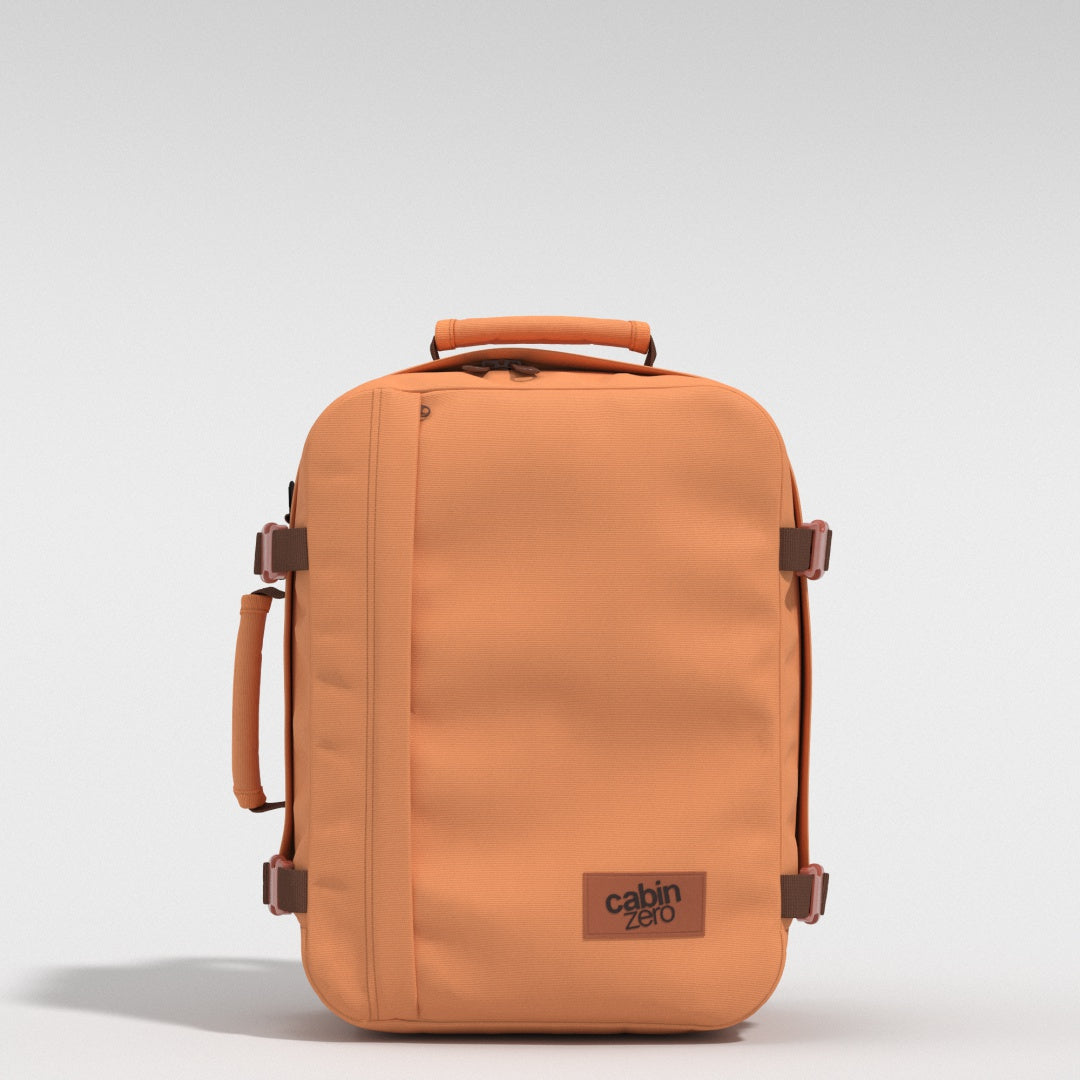
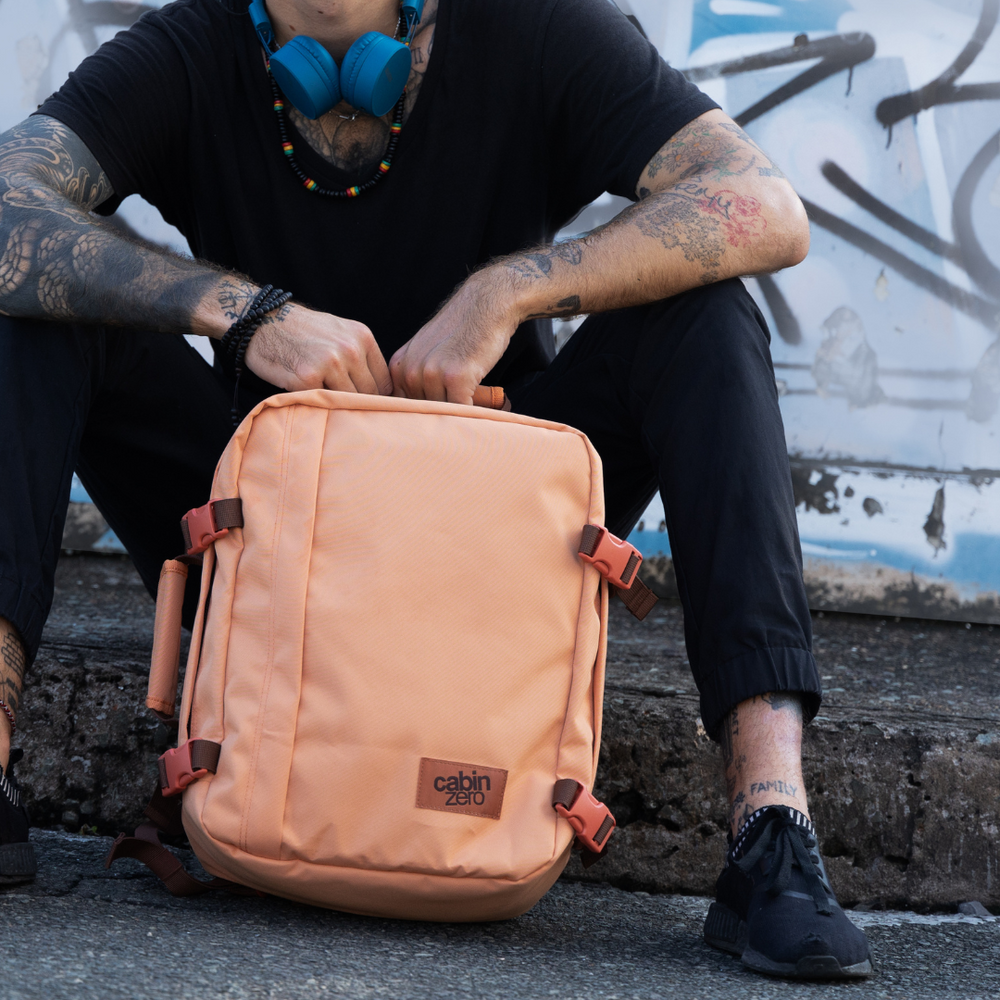
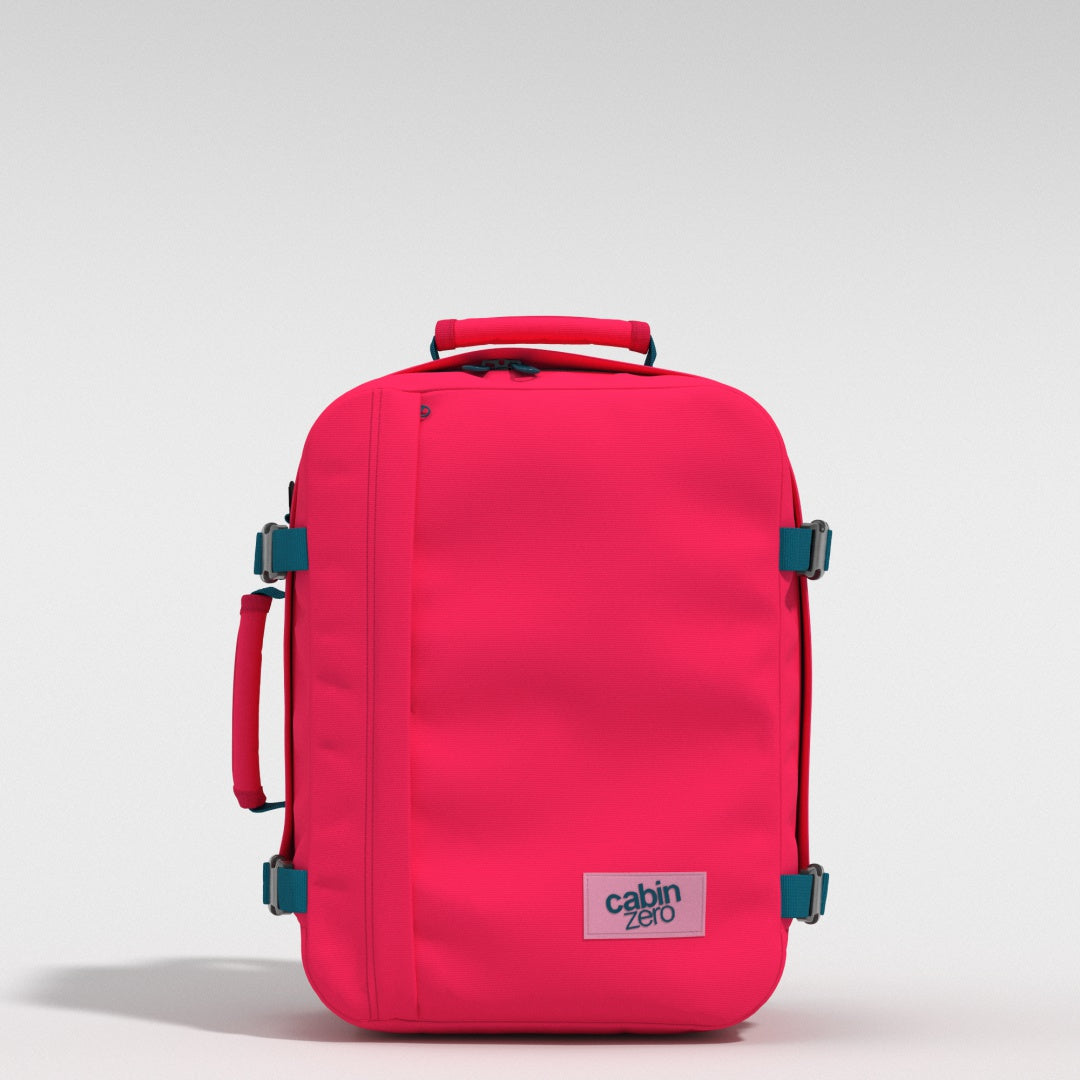
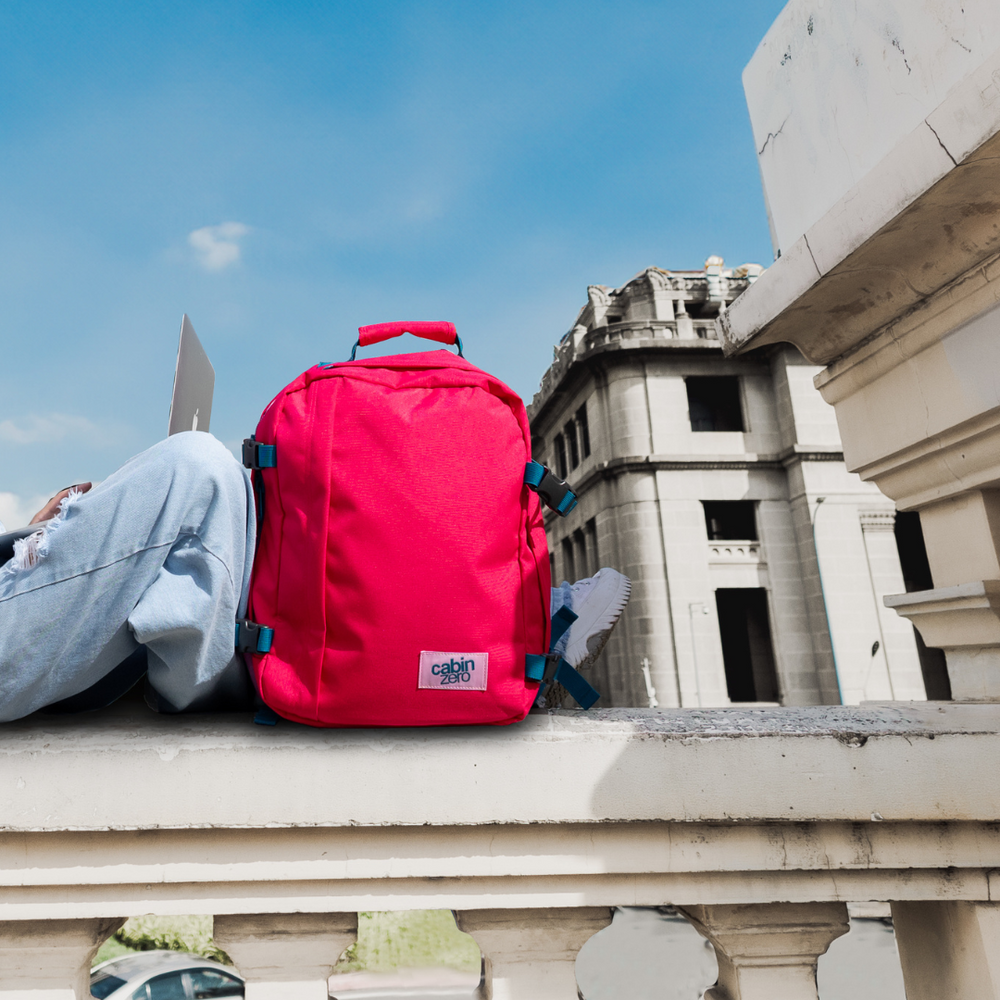
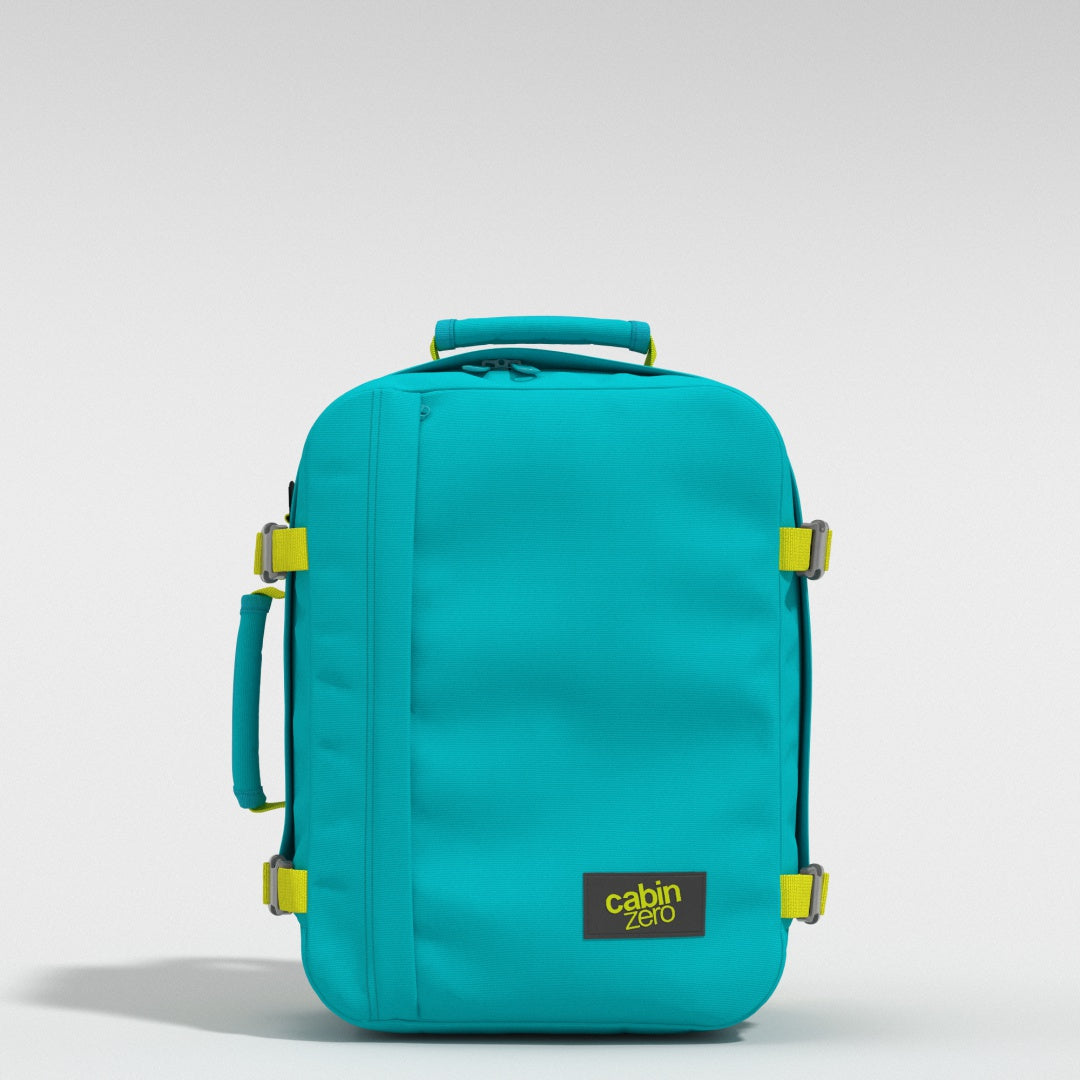
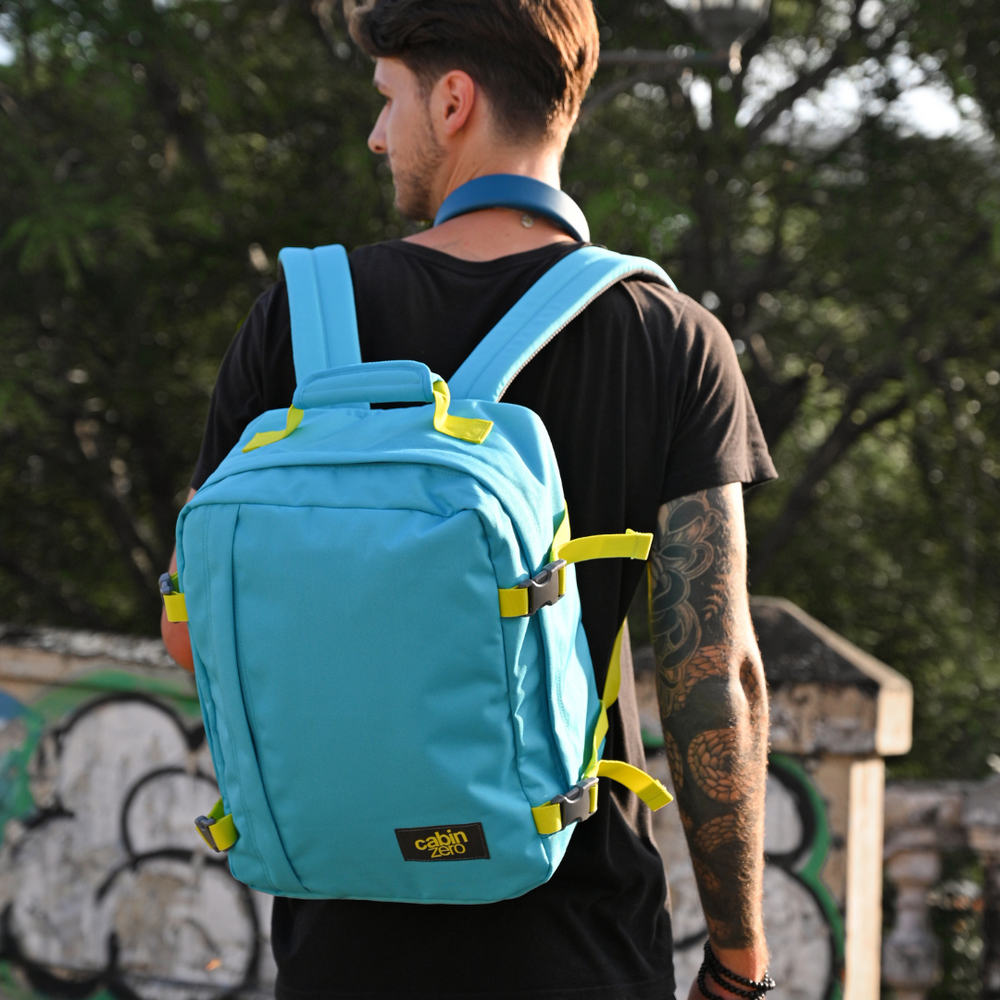
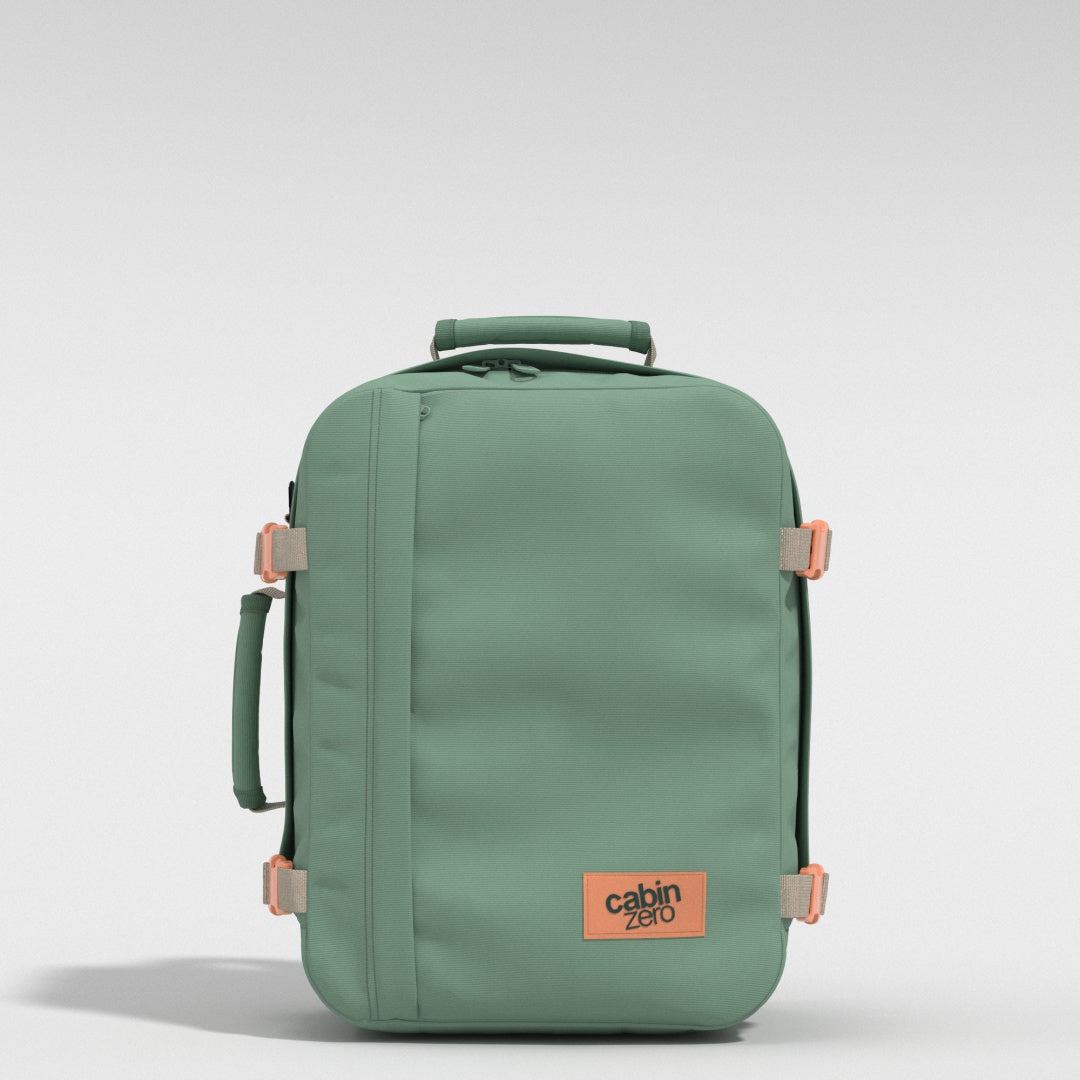
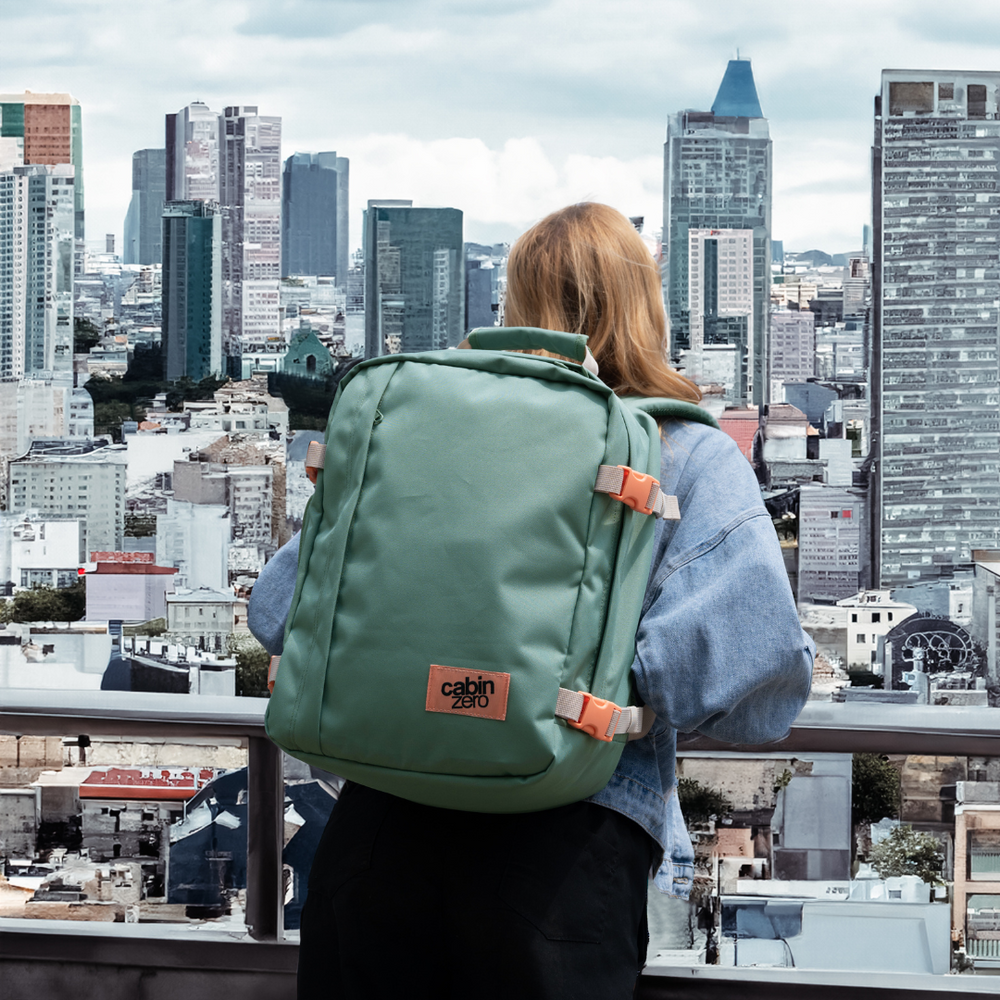
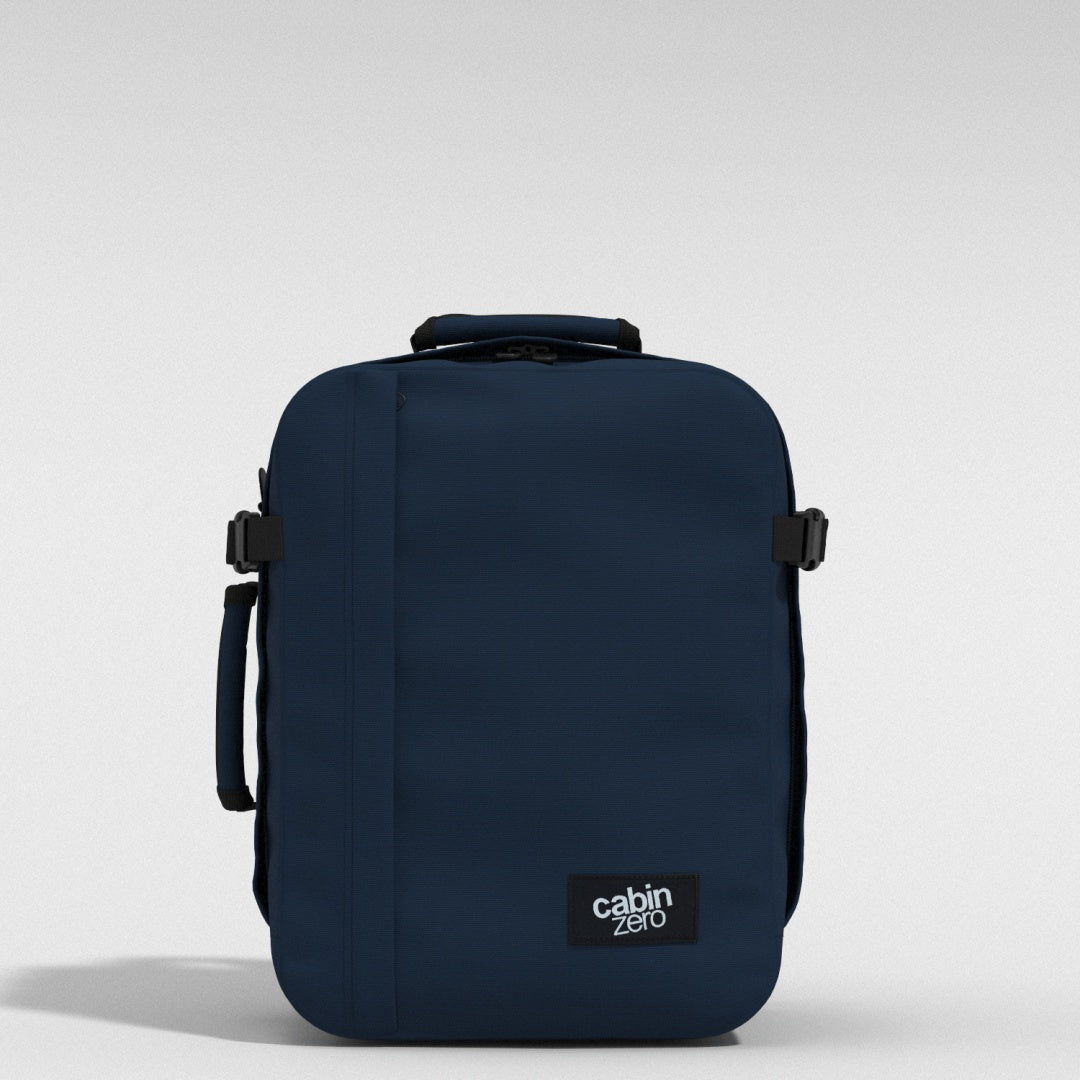
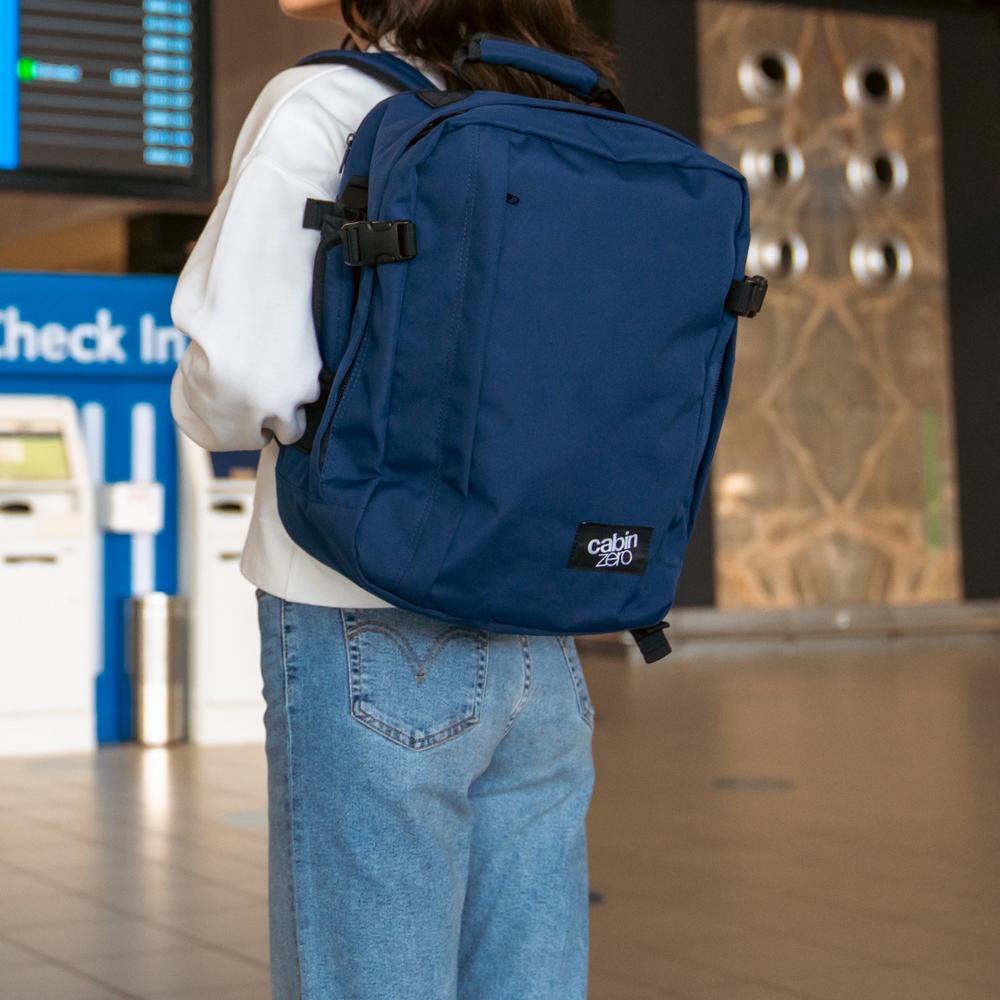



Leave a comment